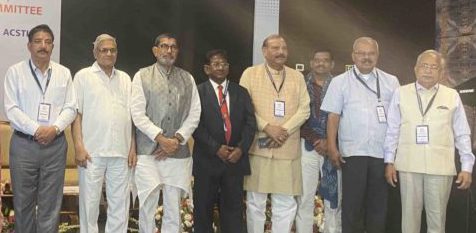In a Report on Trend and Progress of Banking in India 2022-23, RBI said among rural credit co-operatives, StCBs reported better performance during 2021-22 on improved asset quality and profitability.
“The financial health of other segments of the rural credit co-operatives, however, needs improvement. Going forward, robust internal governance practices and continuous technological upgradation and innovations will help co-operative banks to expand their operations and improve their financial health”, it added.
The report said, “For state co-operative banks (StCBs) and district central co-operative banks (DCCBs), growth in loans and advances was accompanied by robust profitability and soundness indicators in 2021-22.
The share of Rural Credit Cooperatives (RCCs) in the total cooperative sector increased to 69.2 per cent in 2021-22 from a recent low of 65.2 percent at end-March 2018, the report said.
As on 31st March 2022, the deposits of Short Term RCCs (StCBs, DCCBs and PACS) and Long Term RCCs (SCARDBs and PCARDBs) stood at Rs 8.33 lakh crore and loans & advances stood at 7.66 lakh crore.
Meanwhile, the PACS and PCARDBs overall loss stood at 1,937 crore and 539 crore as of 31st March 2022. According to the RBI report, in 2021-22, 38,644 PACS were in loss whereas 47,896 PACS registered profit and 382 PCARDBs registered loss in 2021-22. Besides, three State Cooperative Banks, 49 DCCBs, 3 SCARDBs registered loss as of 31st March 2022.
Among short-term RCCs, StCBs have consistently outperformed the other two, with lower NPA ratios, higher RoAs, and higher recovery-to-demand ratios. PACS are the weakest link, with high dependency on borrowings and higher losses incurred during 2021-22.
Within RCCs, the financial performance of short-term rural cooperatives has consistently been better than their long-term counterparts. While the share of long-term rural co-operatives in total RCC assets is miniscule at 4 per cent, they have disproportionately higher NPAs, losses and lower recovery-to-demand ratios.
Short-term RCCs have a three-tier structure viz., state co-operative banks (StCBs); district central co-operative banks (DCCBs); and primary agricultural credit societies (PACS).
Apart from short-term crop loans to farmers, the scope of their operations has widened over time to cover the non-farm sector, with term lending to allied sectors, and microfinance. At the end March 2022, the short-term rural co-operative sector consisted of 34 StCBs, 351 DCCBs, and 1,04,266 PACS spread across 34 States/UTs.
Owned funds of StCBs, which comprise share capital and reserves, grew by 11.5 per cent during 2021-22, and were 6.5 per cent of their total liabilities at end-March 2022.
The western region, especially Maharashtra, contributes the major share in StCBs’ net profits. 31 StCBs posted a profit of Rs 2,338 crore while 3 StCBs (viz. Arunachal Pradesh, Puducherry and Jammu and Kashmir StCB) incurred losses of Rs 50 crore
The GNPA ratio of DCCBs moderated during 2021-22 but remains elevated. Although the accretion to NPAs was higher during the year, the GNPA ratio declined on the back of robust credit growth.
Their GNPA ratios declined in 16 of 20 states during 2021-22. The central and southern states — particularly, Kerala, Madhya Pradesh, and Tamil Nadu — experienced an increase in their GNPA ratios.
The southern region continued to have the lowest NPA ratio and the highest recovery-to-demand ratio across regions operatives covering every Panchayat/village in the next five years, the report informed.
